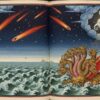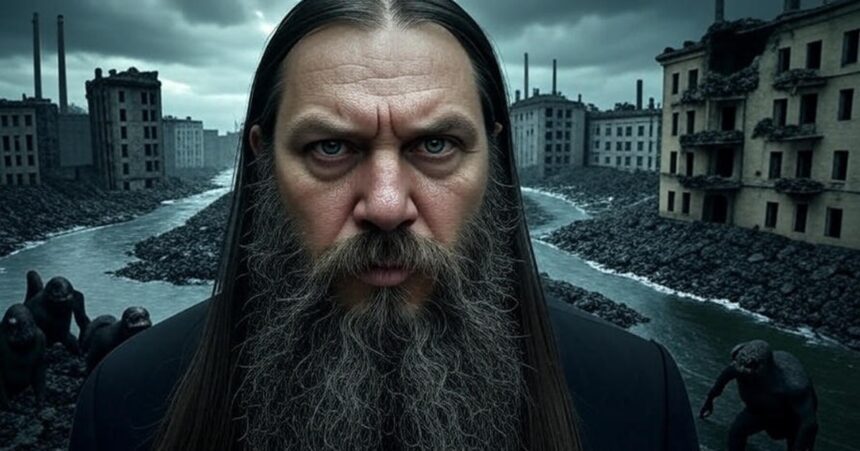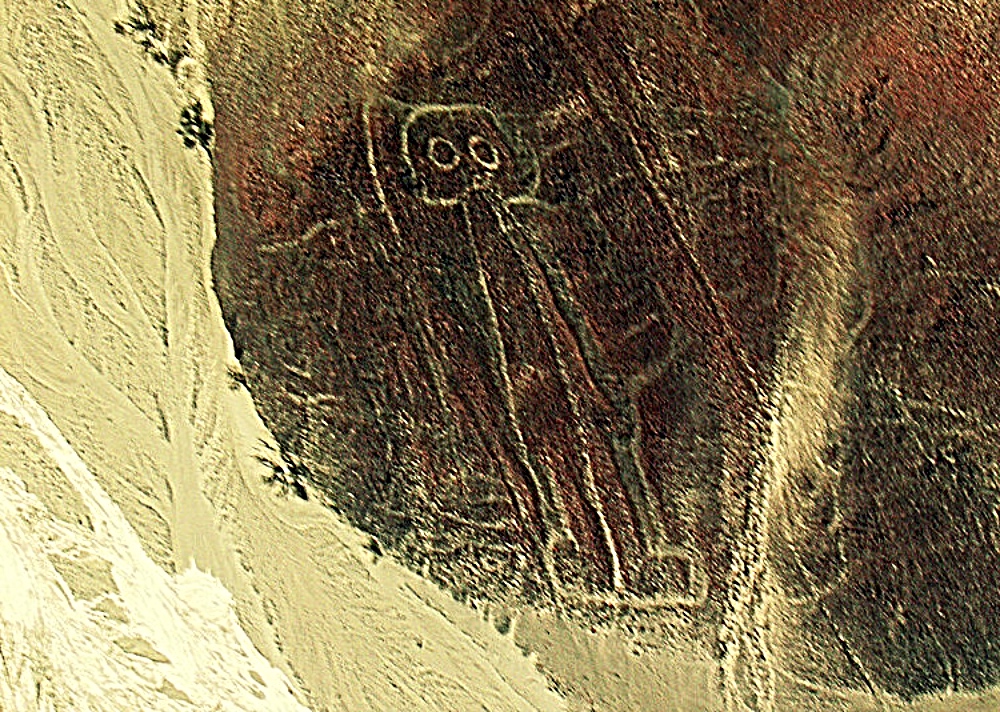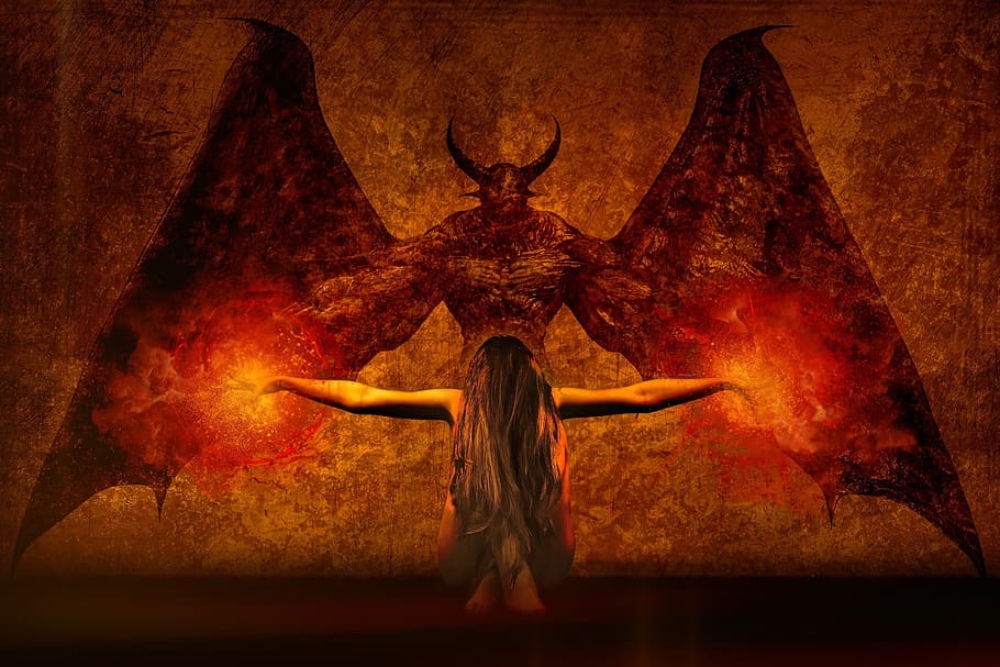Grigory Rasputin, the enigmatic Siberian mystic and confidant of Russia’s last emperor, Nicholas II, remains one of history’s most polarizing figures. Known for his uncanny influence over the Romanov court and his mysterious death in 1916, Rasputin left behind a legacy shrouded in intrigue and fear. Among his most enduring contributions are his prophecies—cryptic visions of the future that continue to captivate and unsettle us today. Some claim that two-thirds of Rasputin’s predictions have already come true, leaving the final third looming ominously on the horizon.
From warnings of poisoned air and towering “castles of death” to foretellings of global wars and soulless monsters, Rasputin’s words seem eerily prescient in our modern era. Are we standing on the edge of the abyss, as he foretold?
Who Was Grigory Rasputin?
The Peasant Turned Prophet
Grigory Rasputin was no ordinary man. Born in 1869 in a small Siberian village, he rose from humble beginnings to become a trusted advisor to Tsar Nicholas II and Tsarina Alexandra. His piercing eyes, unorthodox spiritual practices, and alleged healing abilities made him a figure of fascination and fear. To some, he was a holy man with divine insight; to others, a charlatan manipulating the royal family for power. Yet, his prophecies—recorded in letters, conversations, and later compiled by scholars like Dr. Renzo Basker—have kept his name alive long after his brutal murder.
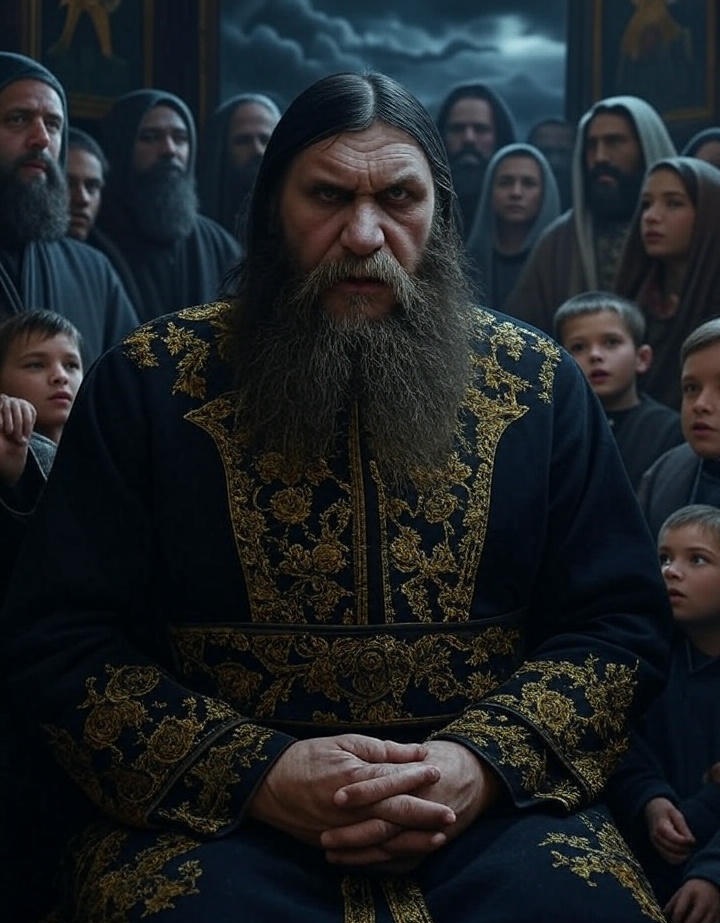
Rasputin’s predictions, often poetic and vague, were not dated, leaving room for endless interpretation. This ambiguity has fueled speculation about their relevance to modern events, from pandemics to technological advancements. But how do we separate fact from fiction, and how do Rasputin’s words hold up against the backdrop of today’s world?
The Challenge of Prophetic Truth
The Bible warns of false prophets who will deceive many before the end times, yet it also speaks of true prophets, even children, who will receive divine visions. Rasputin’s era was rife with spiritual fervor, but how do we evaluate his predictions? One litmus test, as some suggest, is the accuracy of foretelling major events like the COVID-19 pandemic. Few predicted the global health crisis, so those who failed to foresee it might be dismissed as false prophets. Rasputin, however, left behind words that seem to align chillingly with our reality. Let’s explore his most striking prophecies and their possible meanings.

Rasputin’s Prophecies: A Glimpse into the Future
Towers of Death and Poisoned Air
One of Rasputin’s most haunting predictions, as compiled in Dr. Renzo Basker’s work and later distilled by Orazio Valenti in 1993, describes a world plagued by “towers” and toxic air:
“Towers will be built all over the world. And it will seem that life will dwell in the towers, while they will be castles of death. Some of these castles will collapse and rotten blood will flow from their wounds, which will infect the earth and the sky. Then clots of infected blood, like predators, will fall on our heads…”
In the 1990s, readers might have interpreted this as industrial pollution or nuclear fallout. But in 2025, many point to 5G towers or Starlink satellites as potential “castles of death.” Conspiracy theories link 5G to health issues, though scientific consensus refutes these claims. Still, Rasputin’s mention of “rotten blood” and “clots” evokes the rare blood clotting disorders associated with some COVID-19 vaccines, stirring debate among anti-vax communities. Could Rasputin have foreseen electromagnetic radiation or vaccine side effects? The imagery is unsettling, even if the science remains inconclusive.
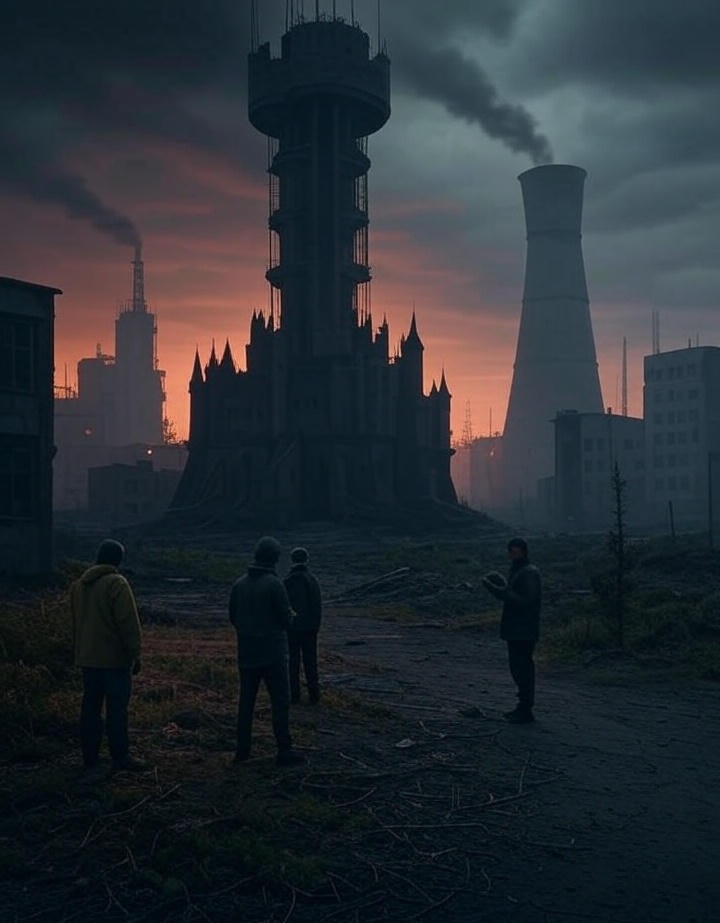
Another prophecy speaks of poisoned air and water:
“The air that enters our lungs to carry life will one day bring Death. And the day will come when there will be no mountains, no hills, no seas, no lakes, that will not be enveloped in the ominous breath of Death. And all men shall breathe Death; and all people will die from the poisons with which the air will be filled…”
Chemtrails—a term for alleged chemical spraying from aircraft—come to mind for some. While mainstream science dismisses chemtrails as contrails (condensation trails), Rasputin’s words resonate with those wary of environmental toxins. His reference to “bitter waters” infecting time also suggests a long-lasting ecological crisis, perhaps mirroring concerns about microplastics or PFAS (forever chemicals) in water sources.
The Poisonous Fruit of Technology
Rasputin’s warnings extend to technology’s seductive dangers:
“When the images fly, the poisonous fruit will ripen and many will taste it. And the poisonous fruit will turn people into animals unable to raise their heads to the sky… Volatile images will exhaust a person’s strength, and a poisonous fruit will intoxicate a person.”
This could describe the rise of digital media, smartphones, or virtual reality. The “flying images” might symbolize streaming content or social media, which critics argue dehumanizes users, fostering addiction and detachment from reality. In 2025, with Neuralink’s brain-computer interfaces on the horizon, Rasputin’s prophecy feels even more relevant. Could the “poisonous fruit” be the allure of merging human consciousness with machines, stripping us of our spiritual essence?
Monsters Without Souls
Perhaps Rasputin’s most chilling prophecy concerns genetic engineering and artificial intelligence:
“Monsters will be born that will be neither human nor animal. And many people who will not have a mark in their body or mind will have a mark in their souls. And then the time will come when you will find in the cradle a monster of monsters of a man without a soul…”
This evokes fears of cloning, cyborgs, or AI-driven entities. The “man without a soul” could symbolize a future where genetic manipulation or AI integration erases human essence. In 2025, CRISPR gene-editing and Neuralink’s neural implants are pushing ethical boundaries, raising questions about what it means to be human. Rasputin’s words align with dystopian visions of a world overrun by soulless creations, a theme echoed in science fiction and ethical debates today.
The Third World War and Global Upheaval
Rasputin’s vision of a Third World War is equally foreboding:
“Two bloodthirsty princes will take possession of the Earth: Blizzard will come from the east and enslave man with poverty, Grayuga will come from the west and enslave man with wealth. The princes will dispute with each other the earth and the sky… Both princes will be victorious and both princes will be defeated.”
This prophecy suggests a global conflict driven by ideological and economic divides—East versus West, poverty versus wealth. The “land of the four demons” as the battlefield remains ambiguous, but some interpret it as the Middle East or a symbolic arena of chaos. Rasputin’s mention of “ancient words” sowing destruction hints at cultural or religious conflicts resurfacing in modern times. With geopolitical tensions rising in 2025—think U.S.-China rivalries or Middle Eastern unrest—this prophecy feels uncomfortably plausible.

The Fate of Russia and St. Petersburg
Rasputin’s prophecies about Russia are particularly poignant:
“Darkness will descend on St. Petersburg. When his name is changed, then the empire will end. And when his name is changed again, the wrath of God will break out over all Europe. Petersburg will return when the sun stops crying…”
St. Petersburg’s name changed from Petrograd to Leningrad in 1924, signaling the Soviet era’s rise. Its reversion to St. Petersburg in 1991 marked the USSR’s collapse. Rasputin’s prediction of divine wrath over Europe could point to economic crises, wars, or cultural decay following these shifts. His mention of a “treasure” from Russia’s womb spreading globally might symbolize cultural or spiritual renewal, though its exact meaning remains elusive.

Three Days of Darkness
Finally, Rasputin’s prophecy of “three days of darkness” is perhaps his most apocalyptic:
“For three days the sun will disappear from the heavens, and for thirty days a mist of smoke and pain will cover the earth with a gray veil. Man will run like a mad dog on this sea of suffering, his life will become agony and his only hope will be death…”
This vision aligns with apocalyptic traditions across cultures, from the Bible’s Book of Revelation to Nostradamus’s quatrains. Some interpret it as a literal event—perhaps a volcanic eruption or nuclear fallout—while others see it as a metaphor for spiritual darkness. In 2025, with climate change and technological risks escalating, this prophecy fuels fears of a cataclysmic tipping point.
Evaluating Rasputin’s Prophetic Accuracy
The COVID-19 Litmus Test
Rasputin’s failure to explicitly predict the COVID-19 pandemic is a point of contention. While his references to “rotten blood” and “clots” align with vaccine-related concerns, no clear mention of a global plague exists in his known writings. This omission might discredit him in the eyes of skeptics, as the pandemic was a defining event of our era. However, his broader warnings about poisoned air, water, and societal decay could encompass pandemics indirectly, especially if viewed through the lens of environmental or biological crises.
5G, Starlink, and Neuralink: Prophetic or Coincidental?
Rasputin’s “towers of death” and “flying images” resonate with modern fears about 5G, Starlink, and Neuralink. While 5G towers are scientifically safe, public distrust persists, fueled by misinformation. Starlink’s satellite network, blanketing the globe, could be seen as “towers” in the sky, enabling global connectivity but also surveillance concerns. Neuralink’s brain implants, still in early stages in 2025, raise ethical questions about human augmentation—echoing Rasputin’s “man without a soul.” These parallels suggest either prophetic insight or the timeless vagueness of apocalyptic warnings, open to reinterpretation in any era.
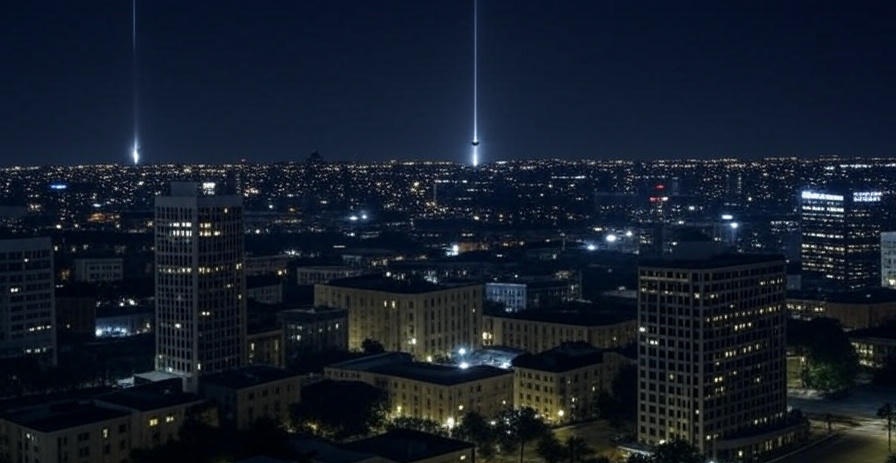
True Prophet or False?
The Bible’s criterion for a true prophet is accuracy (Deuteronomy 18:22). Rasputin’s fulfilled prophecies—such as Russia’s upheavals and environmental degradation—lend him credibility. Yet his vague language allows for confirmation bias, where believers see what they want in his words. The rise of false prophets, as Rasputin and scripture warn, complicates matters. In 2025, with social media amplifying voices from doomsday preachers to conspiracy theorists, distinguishing truth from deception is harder than ever.
A World on the Edge in 2025
Rasputin’s warnings of moral decay, technological overreach, and global conflict feel tailor-made for 2025. Climate change, with its toxic rains and dying ecosystems, mirrors his “sick plants” and “poisonous waters.” Geopolitical rivalries echo his “bloodthirsty princes.” And the ethical dilemmas of AI and genetic engineering align with his “soulless monsters.” Whether Rasputin was divinely inspired or merely perceptive, his words challenge us to reflect on our trajectory.
Are We Ready for the Final Third?
If two-thirds of Rasputin’s prophecies have come true, as some claim, the final third—potentially involving global war, ecological collapse, or spiritual desolation—looms large. His visions of towers, poisons, and soulless beings resonate with our fears of technology and environmental ruin. Yet, his prophecies also offer hope: a “third light” rising from the ashes, a renewed Russia, a cleansed world. Whether we view Rasputin as a prophet or a poet, his words compel us to confront our choices. Are we ready for what lies ahead, or are we already standing on the edge of the abyss?



